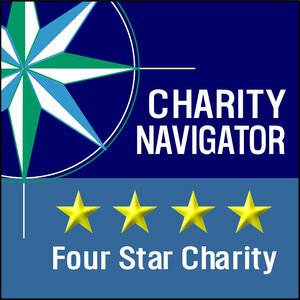Here at the Western Folklife Center, we’ve been “archiving the West” for nearly 40 years now. This “archiving” is one way we cherish the people of the West and carry memories-made with us into the future. As we revitalize longterm archival initiatives, we’ll be bringing this process from behind-the-scenes to on-your-screens, starting with a series of posts From the Archives. We see this as part of a larger conversation with you all, because the heart of this archival process doesn’t exist without you. The archives are a living repository of memory, expressive culture, art, and voices from people just like you… heck, let’s face it, very likely maybe even you yourself! As Programs Manager Ian Hallagan helps to unearth the soul of the WFC Archives, he dives in with the question,
“What’s in an archive?”
Spontaneity is a hallmark of the National Cowboy Poetry Gathering. In this short video from 2008, Jesus Garcia and Don Beto Cruz break out into an impromptu performance of corridos, a sung storytelling ballad tradition stemming from cultural histories of Mexico and the northern border region. Video from the WFC Archives, recorded by Carol Spellman and Anders Lund.
What’s in an archive?
It’s a common question asked when considering the role of archives. Many times, a significant portion of discourse highlighting the strengths of an archive lies in numbers: the thousands of video files, tens of thousands of audio segments, and hundreds of thousands of photographs that have all been neatly organized, accessioned, and maintained in a temperature-controlled environment for the budding or veteran researcher to incorporate into a foundational paper on some underreported or ignored subject that demands attention. And, while this is certainly an important aspect to cover and to highlight, for the Western Folklife Center’s Archives–as well as other similar folklife archives across the United States and beyond–this is only part of the story.
”We oftentimes miss just who is part of the Archives: it is friends, family members, folks that you’ve seen on stage and in the grocery store aisle or at the other end of the bar. It equally represents some of the greatest artistic expressions in the West and beyond–all tell a story that contributes to this experience.”
With more than 35 years of programs, performances, fieldwork initiatives, exhibits, demonstrations, workshops and everything in-between, the WFC Archives represent a site of living memory, shaped by the experience of the West and by those that have lived, and continue, to live it. We oftentimes miss just who is part of the Archives: it is friends, family members, folks that you’ve seen on stage and in the grocery store aisle or at the other end of the bar. It equally represents some of the greatest artistic expressions in the West and beyond–all tell a story that contributes to this experience. The Archives also highlight the continuity of tradition and how it changes, expands, and remains deeply rooted in the real lives of people. The cowboy poets that now tower as titans in their art form still started from humble beginnings (as the videos from those early days in January 1985 remind us). Similarly, the connections to international communities as far and wide as Mongolia and Hungary highlight similarities we all share, and the vital, cross-cultural relationships we are able to establish.
Dr. Tserendorj Tseyen, PhD in Mongolian Folklore and celebrated yerööl (blessing song) and magtaal (praise song) performer, during the 2004 National Cowboy Poetry Gathering. Photos by Peter Goss. Click images to enlarge.
An example of a log sheet from the 1995 National Cowboy Poetry Gathering. Do you recognize the artists listed here? Click image to enlarge.
The WFC Archives is equally an archive representing community contribution. Every year, multiple volunteers from Elko and the surrounding community come to the National Cowboy Poetry Gathering to log events for entry into our archival databases. Logging, in this context, refers to the efforts to catalog every known piece of information that occurs during a performance. It is impossible to understate these efforts, which serve as a central pillar to our ability to record every song, poem, and talk that happens each year. Without the time and efforts of those that share a similar passion for the work of the WFC, to know just what happened every year at each event would be practically impossible.
However, it would be hard to ignore the humble beginnings from which the Archives first started, and how such a massive collection was created from such a small number of dedicated staff committed to preserving these materials. Individuals like Steve Green worked tirelessly, often accomplishing on their own what would regularly require the time of several archivists. As I relate my own experiences in learning more about the various collections and media housed in Elko, I continue to think how such a small team was able to accomplish so much. We sometimes forget how difficult it is to organize an archive, to create a series of tools that make such a plethora of information accessible, as well as understandable.
In this video, Steve Green, the WFC’s foundational archivist, provides an overview of the extensive materials to be found in the WFC Archives.
What I’ve hoped to convey through these words is the overarching importance of a folklife archive, particularly the unique importance of the WFC Archives. The Archives are not solely a repository of information and the past–it’s a form of continually evolving experience and memory that aims to more deeply represent the West. It is an experience of local dedication and collaborative effort. To merely refer to the WFC Archives as an amalgamation of audiovisual material is to ignore the larger importance of just why such an archive should exist in the first place. It’s not only a means to show where we’ve been, it’s a way to highlight where we’re going–how we change yet hold on to the traditions that continue to have a place and importance in our everyday. That’s what it means to truly be a living archive.
“The Archives are . . . a form of continually evolving experience and memory . . . of local dedication and collaborative effort. . . . it’s a way to highlight where we’re going–how we change yet hold on to the traditions that continue to have a place and importance in our everyday. That’s what it means to truly be a living archive.”
Over the coming months, we will be showcasing this rich diversity of experience and artistic expression through regular blog posts. It is vital for these materials, spanning so many years and different subjects, to be made increasingly accessible not only as a means of celebrating what the West is and can be, but also for research opportunities, interconnectedness between different communities and culture, and reflecting a larger goal of making such material available to the public. During this time, I invite you to include your own input in this process. What do you remember from the National Cowboy Poetry Gathering that you would like to see shared in future posts? What memories do you have of these events, and what is their importance to you? Please reach out to let us know–join in the conversation in the comments or email me (Ian) directly. We all have an important story to tell, and we look forward to being a part of yours.
Archival photo roll from the Stockmens Jam Session at the Western Folklife Center’s 1994 Country Music Gathering. Photos by Sue Rosoff.
Many thanks to Steve Green and Annie Hatch for their assistance and feedback in writing this post. The Western Folklife Center is a member-based nonprofit organization. The WFC Archives are also supported in part by sponsorship from Tito & Sandra Tiberti.








